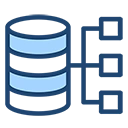Database schema for Human Resource Management System
Designing a database schema for a Human Resource Management System (HRMS) involves capturing information related to employees, departments, positions, leave management, attendance, and other relevant entities. Below is a basic example of a database schema for an HRMS.
Entities:
Employee:
- EmployeeID (Primary Key)
- FirstName
- LastName
- DateOfBirth
- Gender
- Address
- PhoneNumber
- HireDate
- PositionID (Foreign Key referencing Position table)
- DepartmentID (Foreign Key referencing Department table)
- ManagerID (Foreign Key referencing Employee table for reporting hierarchy)
Department:
- DepartmentID (Primary Key)
- DepartmentName
Position:
- PositionID (Primary Key)
- PositionTitle
- Salary
LeaveRequest:
- LeaveRequestID (Primary Key)
- EmployeeID (Foreign Key referencing Employee table)
- LeaveStartDate
- LeaveEndDate
- LeaveType (e.g., sick leave, vacation)
- LeaveStatus (e.g., pending, approved, rejected)
Attendance:
- AttendanceID (Primary Key)
- EmployeeID (Foreign Key referencing Employee table)
- AttendanceDate
- ClockInTime
- ClockOutTime
Payroll:
- PayrollID (Primary Key)
- EmployeeID (Foreign Key referencing Employee table)
- Month
- Year
- BasicSalary
- Deductions
- Allowances
- NetSalary
PerformanceReview:
- ReviewID (Primary Key)
- EmployeeID (Foreign Key referencing Employee table)
- ReviewDate
- ReviewerID (Foreign Key referencing Employee table for reviewer)
- Rating
- Comments
This schema covers the basic entities needed for an HRMS. Here are some explanations:
- Employees have personal information stored, including their position, department, and reporting hierarchy.
- Departments and positions help organize the workforce and manage job roles.
- LeaveRequest captures information about employee leave requests, including start and end dates, leave type, and status.
- Attendance records the daily clock-in and clock-out times for employees.
- Payroll contains salary and financial information for payroll processing.
- PerformanceReview stores details about employee performance reviews, including ratings and comments.
Depending on the specific requirements of your HRMS, you may need to expand or modify this schema. Consider additional features such as employee training, benefits management, recruitment, or any other information relevant to your human resource management platform. Additionally, ensure that your system adheres to privacy and security regulations.

